Picto Diary - 23 April 2017 - Mangalore

Above: Entering Mangalore harbor. Karnataka, India. Sunrise. 23 April 2017.
The Seven Seas Voyager follows the direct line of the sun's reflection, due east, into Mangalore port. Kinda like this entry was conceived by ancient Incas...aliens...or some such. The symmetry of this quiet experience is a bit spooky as I sit here, alone, in the observation lounge. I'm half expecting some kind of star gate to open up.
We're still on the Malabar coast. We were through Mangalore, Karnataka's principle port... #7 in tonnage of all Indian ports... in November of 2012. Then we visited St. Thomas Cathedral and adjoining Jesuit university, a shipbuilding area, the downtown market (where I purchased a Titan wrist watch), and a cashew processing factory (fascinating multi stage, labor intensive process).
The bulk of India's coffee and cashews are exported from Mangalore. Coal is the largest import.
We're going to join a ship's tour today that takes us to a tropical fruit and spice farm, and some important Jain sites.
The Portuguese grabbed control of the area in 1520. Portuguese lost Mangalore in 1650 to local warlords. First Cochin and then Goa became long term Portuguese strongholds on the Malabar coast.
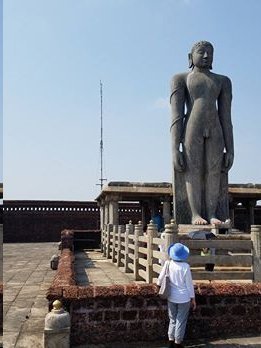
Above: TIMDT stands at the base of a giant monolithic statue of Lord Bahubali. 23 April 2017.
Bahubali is a much revered figure among Jains. He was the son of Adinath, the first tirthankara (one of 24 Jain prophets) of Jainism. He is said to have meditated motionless for one year in a standing posture and that during this time, climbing plants grew around his legs. After his year of meditation, Bahubali is said to have attained omniscience. According to Jain texts, Bahubali's soul was liberated from the cycle of births and deaths. He is revered as a liberated soul.
The statue is fifty two kilometers from Mangalor in southwest Karnataka. It is 42 feet high and made of grey granite.
Jainism took root in Karnataka during the 10th century. There are still a number of Jains in Karnataka (the State where Mangalore, Bangalore, and Mysore are major centers).
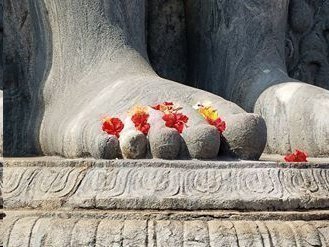
Above: Flowers inserted into the toes of the Bahubali monolith. 23 April 2017.
The flowers simulate the vines said to have gathered around Bahubali's ankles and legs during his one year standing without moving.
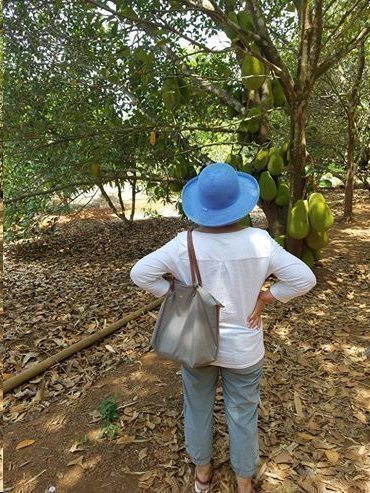
Above: TIMDT checks out jack fruit tree. Soan Farm. Ponda, Karnataka. 23 April 2017.
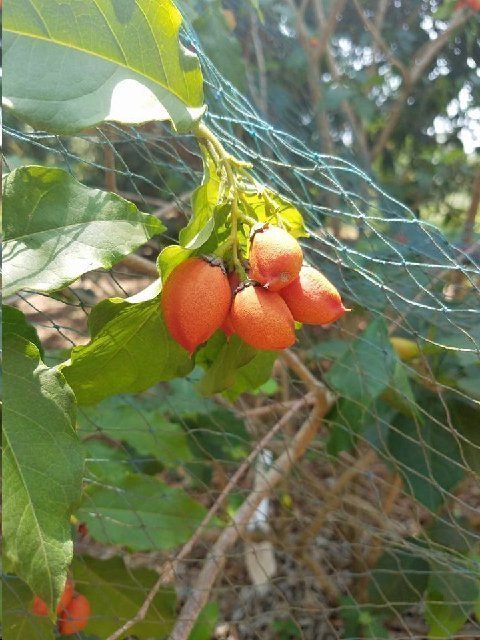
Above: Cannonball fruit flower. Soan Farm. Ponda, Karnataka. 23 April 2017.
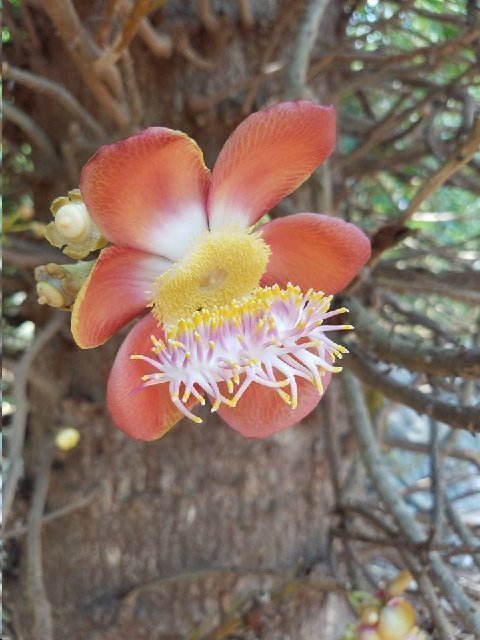
Above: Black Cardamom flower. Soan Farm. Ponda, Karnataka. 23 April 2017.
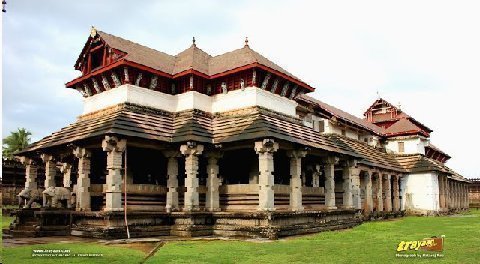
Above: One Thousand Pillars Temple. Moodabidri, Karnataka. File image. 23 April 2017.
Moodabidri, 35 kilometers from Mangalore, is a center for Jainism. There are 18 temples in the town, the most prominent of which is the One Thousand Pillars Temple (psst. there aren't 1000 pillars)!
The temple, built in 1430, is dedicated to the 8th (of 24 Jain prophets) Tirthankara of Jains, Chandranatha.
Its an impressive Jain temple, but not on the scale of the great Chaturmukha Jain Temple at Ranakpur in Rajasthan, which we visited last year.
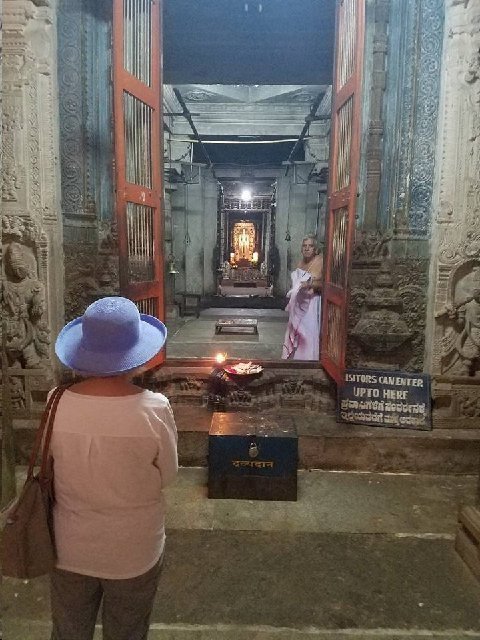
Above: TIMDT stands at the entrance to the holy of holies of the One Thousand Pillars Temple. Moodabidri, Karnataka. 23 April 2017.
The entrance is guarded by a Jain priest. Beyond is the statue, made of five different metals, honoring tirthankara Chandraprabha.
All of the pillars, walls and ceiling are intricately carved with design and symbol.

Above: Guide, Mr. Fernandez at One Thousand Pillars Temple. Moodabidri, Karnataka. 23 April 2017.
Here Mr. Fernandez inserts a newspaper in the narrow space between the pillar and its pedestal, showing the actual pedestal support to be much smaller than what at first meets the eye.
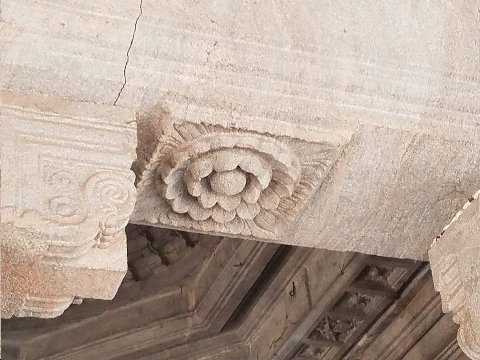
Above: Lotus blossom carving in ceiling of One Thousand Pillars Temple. Moodabidri, Karnataka. 23 April 2017.
Carved images of lotus blossoms appear throughout the temple. The lotus grows in a dirty, messy, swampy environment. Yet, the blossom rises above the sludge to be a flower of great beauty. So, say the Jains, we all have a responsibility to rise from that which is not pure to become something beautiful and good in life.
Jains, following a religion as old as Buddhism, practice what they preach. Only five million strong in India, they are disproportionately wealthy and work across a wide spectrum of career disciplines: art, manufacturing, finance... With wealth comes responsibility and Jains have a strong reputation for philanthropy.
Jain success derives from the disciplines taught by their religion. Culture and religion are like a double helix... inextricably intertwined. Without religion - a code that unites the faithful and motivates them to progress - there is no culture and, therefore, no growth.
Addendum:
I remember our visit with you to Cochin—especially “Jew town’; and the cashew nut factory. That was my first visit to India-Excellent pictures as usual. See you in park city this summer
Best Regards- Montage, Marina del Rey, CA